It’s often left to the mate to ensure those on board have an enjoyable trip – whether the fish cooperate or not.
Party boat time – The chance to spend a few hours on the water and return home with enough fish to last a few meals.
The captain – The man who knows where the fish are and takes you out to catch them. He runs the boat, reads the charts, studies the weather, checks on the radio with other captains, makes all the decisions: drift or anchor, skinny water or deep, short run with more fishing time or long haul and greater chance of success. It’s his boat, his responsibility. You catch fish, come home happy, tell your friends, he maintains a good reputation and stays in business in spite of tightening regulations and increasing fuel and maintenance expenses.
The mate – Greets you when you come aboard, gives out bait, untangles lines, cleans fish.
End of story? Not quite. The captain may see the fish on his recorder, but it’s the mate who helps you get your line down to where they are; the one who sees to it that you put fish in the bucket.
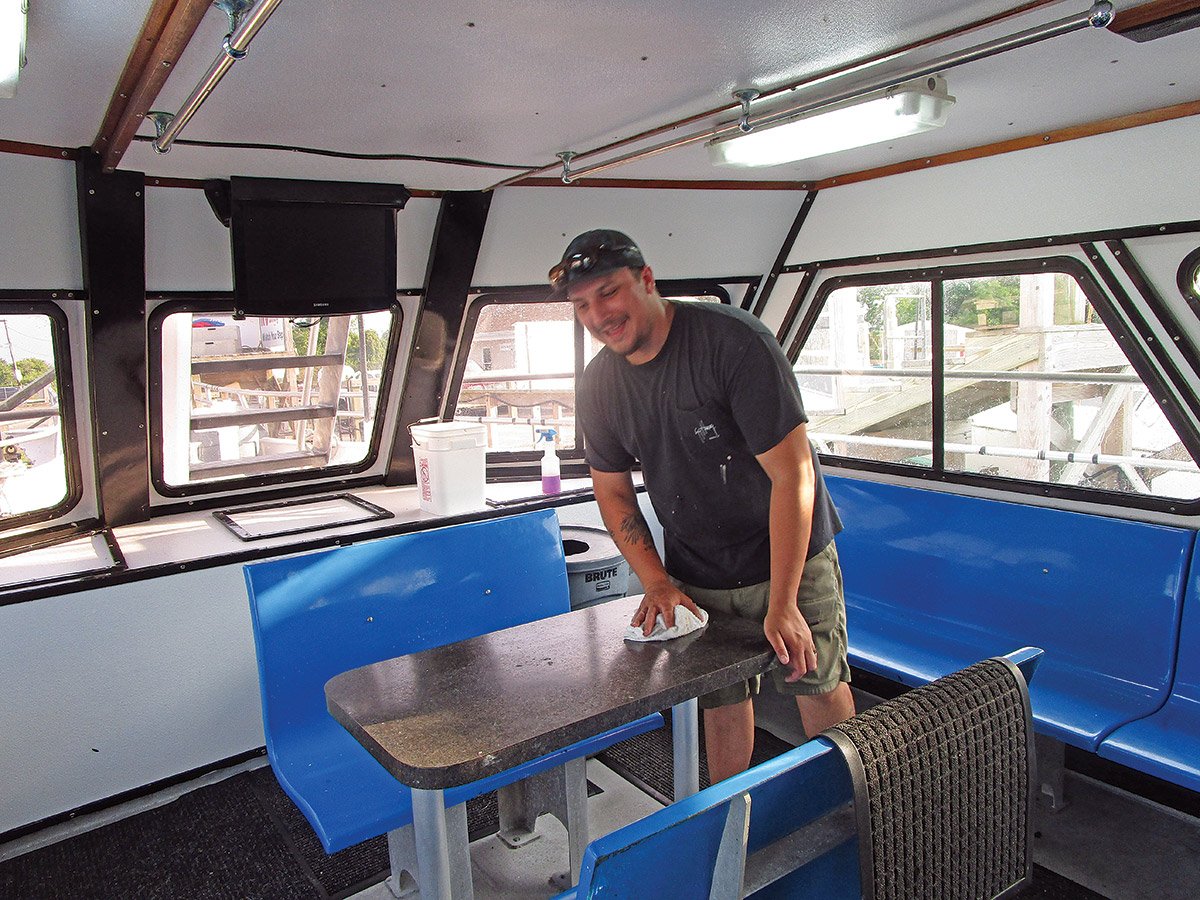
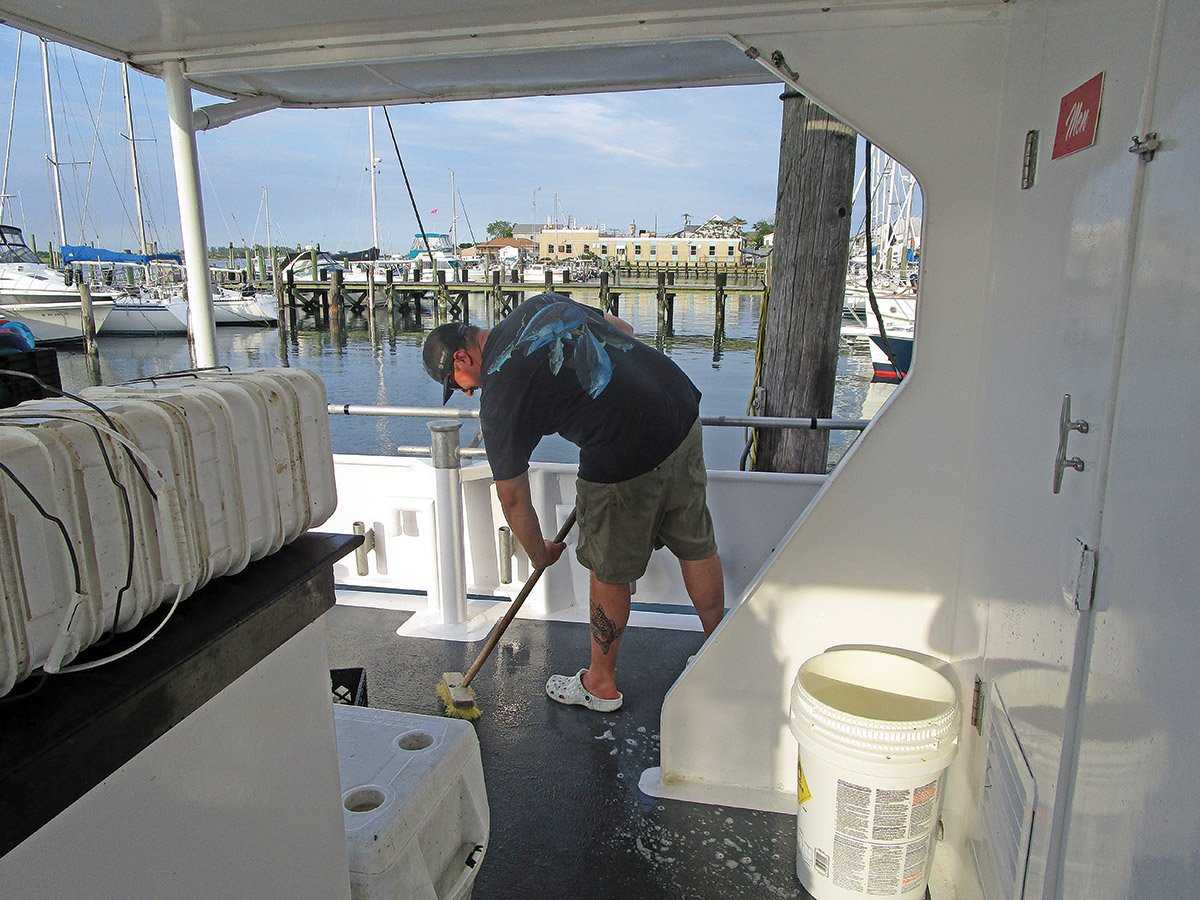
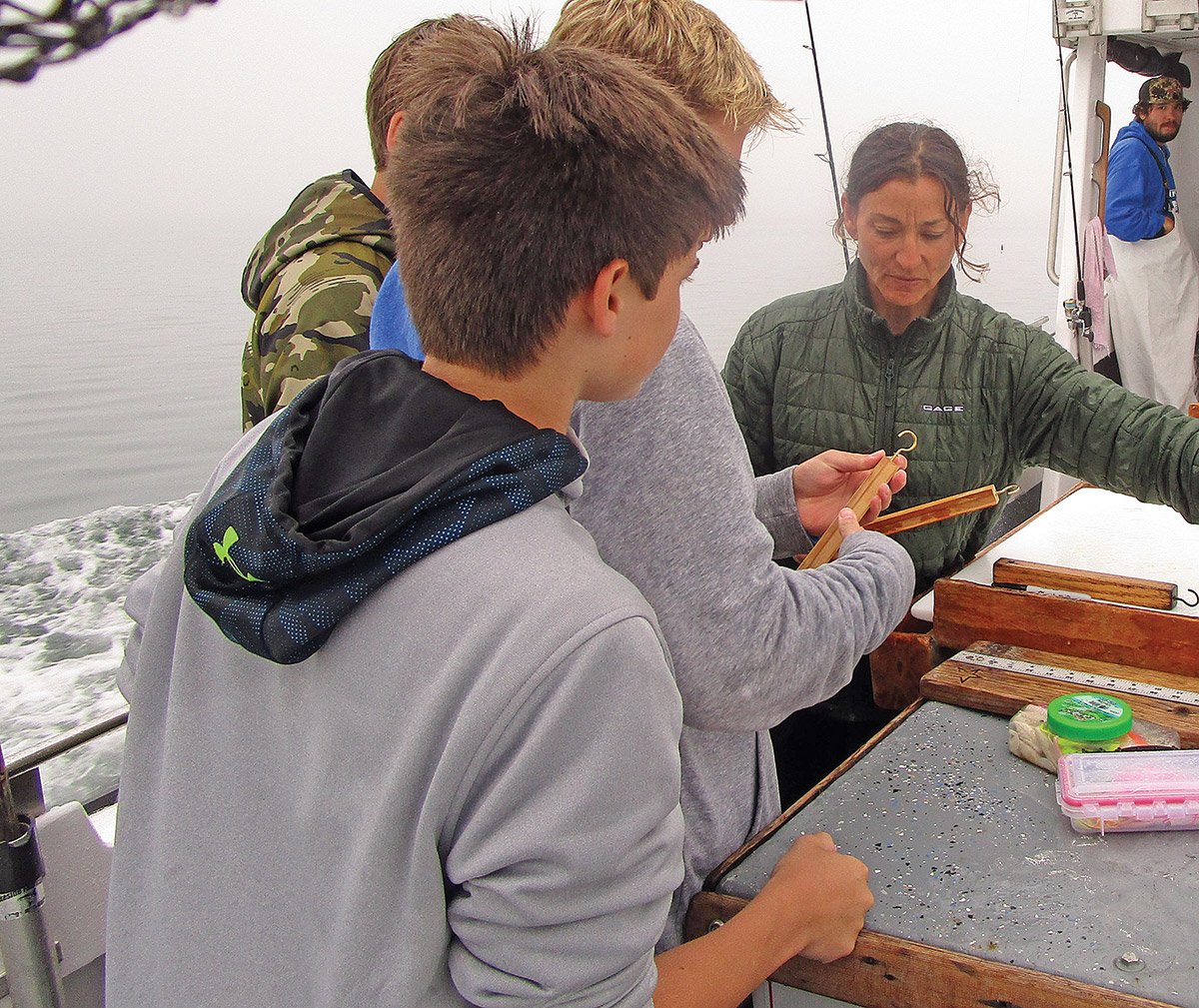
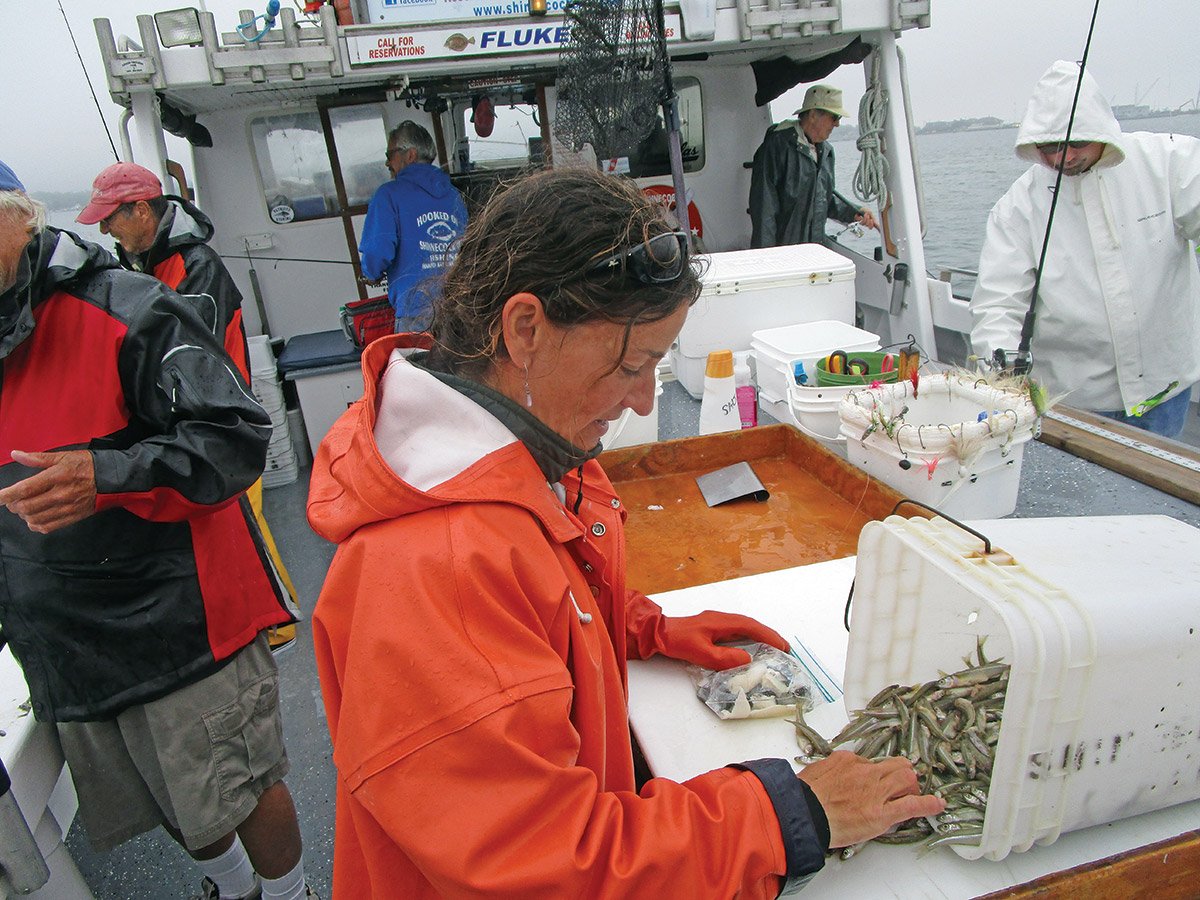
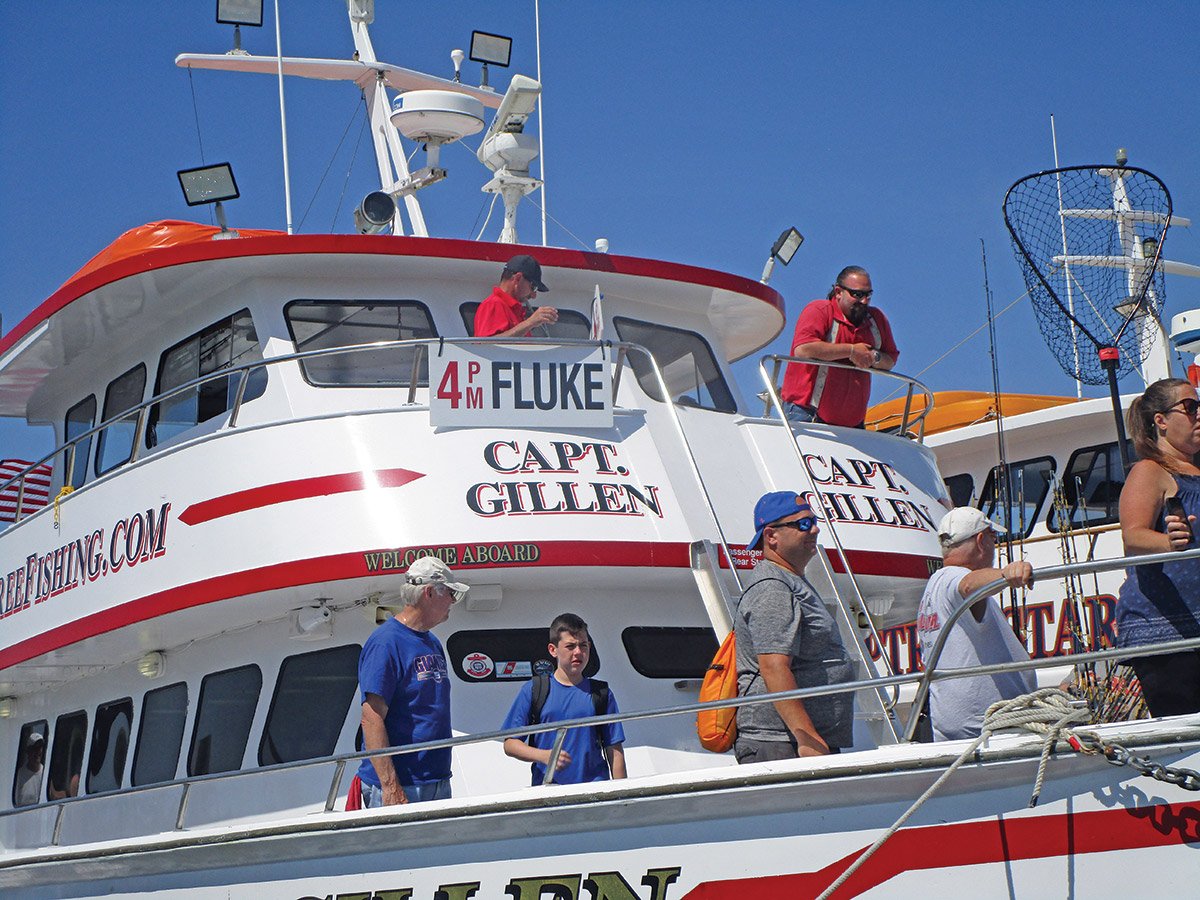
In order to put together a comprehensive look at what a mate’s job entailed meant spending time and talking with mates on various sized boats out of Nassau, Western Suffolk, the East End and the North Shore. I spoke with mates who served on some of the Island’s popular party boats and who the captains felt were good representatives of their craft. And while the specific duties of all of the men and women may not be the same in every case, hopefully this paints a good picture of who they are, what mates do, and why they do it. (It turned out the five men and women I spoke with – pros all – had a combined average experience of 16-plus years.)
So You Want To Be A Mate
The job description for a professional mate might read something like this: Must be willing to work long hours (12- to 14-hour days) in any and all kinds of weather and possess the following skills: tour guide, tutor, mechanical ability, willingness to work, love of the outdoors, extreme patience, general knowledge of first aid, the ability to multi-task, and display the dynamism of the Energizer Bunny. Oh, yes – and know fishing as well.
An Hour or Two Before the Boat Sails: Make sure the boat and its equipment are ready. Gather the correct tackle required for that day’s fishing. If the number of customers is known, set out and space the rods and reels. Make sure all are ready with lines untangled. If the number of customers is not known, gather the rods into convenient sized groups. Cut and prep the bait. Collect and assemble whatever jigs or lures may be needed along with bait buckets. Check the engine oil, eyeball all shafts and fittings for any leakage, check that all cables are tied down and secure, that nothing has worked itself loose. Make sure first aid gear and all emergency equipment are stowed and readily accessible. Check bathrooms are clean and well stocked.
A Half-Hour to Go: Get ready to greet early arrivals. As boat begins to fill position customers. Regulars will have their favorite spots. When greeting new faces, welcome them and try to find out if it’s their first time fishing. If so, position them where it will be easiest to reach and assist them as they learn the ropes. Distribute tackle and begin chatting, advising where the boat is going what they’ll be fishing for.
Casting Off: Here is where safety and the well-being of the passengers begins. (This will occupy an area of prominence throughout the day.) Look around to make sure all hands, limbs and heads are this side of the rail. Untie the lines. Double-check that nobody has undone a rig and left a hook flying about. Collect fares and explain pool rules for the day. Make sure everyone is comfortable. Review the method they’ll be using for the species they’re targeting and make certain everyone on board is aware of what the size regulations are for a keeper.
Finally Fishing: While the paying public may not be aware of it, catching fish is not the first thing on the mate’s mind. The key is not to have any accidents and if they do happen to be able to respond promptly, effectively, and efficiently. Anything from a passenger succumbing to sea sickness, to a fall and nasty head wound as it collides with a rod holder, to heat stroke because someone forgot to stay hydrated, to a rescue of an errant wind surfer being blown out to sea. Like the insurance commercial goes, “Yep, we’ve seen that.” But thankfully these events are rare. Because of precautions taken and a watchful eye, an enjoyable day on the water is what almost everyone always experiences.
These crew members are professionals, well aware that in spite of their best efforts fish may not always cooperate, but that doesn’t mean it still can’t be a day of fun. It may be hard to believe, a mate often takes it harder than a customer when there’s few fish to be caught. By being observant, they will often find ways to engage those on board in conversation. With a regular it might be the suggestion of a rig modification that had worked on a trip the day before. Or, it might be a lesson in how to make a fish de-hooker out of a screw hook and a piece of hardwood. It might be as simple as noticing a shirt or cap a passenger is wearing with a logo of a college or a Caribbean island and striking up a conversation. It might also be a lesson involving a sea robin that has just been landed or an examination of bait that a boated fish spits up. It’s all part of acknowledging that people matter, and this is a day off for those who came aboard. Of recognizing that you have to be a people person in order to be a mate.
Somedays untangling lines may seem like an unending chore on a crowded boat and keeping spirits up becomes a good part of the job. Especially when the bite turns on and shouts of “Mate” or calls of “Net! Net!” come from every direction, while those not hooked up try desperately not to interfere while still keeping their lines in the water. And while all of this is going on, the mate still has to be checking that fish caught earlier are still being kept out of the sun and cold enough, that bait buckets aren’t running empty, that personal tackle boxes aren’t being left where someone else can trip over them, that anyone who needs to be re-rigged is tended to right away so they can get in on the action. In other words, asking themselves “What can I do to improve someone’s trip?”
Heading Home: Time to clean and fillet the day’s catch. But also a good time for a biology lesson for the youngsters on board as the contents of a fish’s stomach divulge information as to what they’re feeding on. Often with fascinating results. And a good time for a final chat with the adults as instructions on how to properly fillet a fish are gladly demonstrated along with various methods of cooking their catch are shared.
End of Day: But it’s not. After the final “Good byes” and the “Come agains,” as the last car pulls out of the parking lot, it’s time to start cleaning the boat. Time to get it ready for the next trip. The hose comes out and flushes the loose fish debris away, the buckets and soap appear, now it’s time to wash the windows and scrub the decks. Inside the cabin tables and chairs are wiped down as leftover candy wrappers and coffee cups are thrown in the trash. Outside, bait and fish buckets are rinsed. Frozen bait is set out to defrost in time for the next passengers to come aboard. Bathrooms are cleaned. Reels are relined if necessary. A re-check of the engine room. Whether it’s mid-day with another trip in an hour or so, or the end of the day, everything has to be left ready for the next load of paying customers.
But Why Do This?
It’s a question that many mates ask themselves every morning when the alarm goes off before dawn or at the end of a very long day, and the answers always come back the same. It’s a love affair with nature, of being on the water every day. It’s a view you could never get from any office. It’s the interaction with different people every day and from all walks of life. It’s the building of lasting friendships with those who return time and again. It’s the opportunity to work with families and young children, encouraging a way of life away from the obsession of a cell phone or video game. It’s the thrill of seeing a little kid catch his first fish. It’s a way of life.
It may sound corny, but for mates, saltwater is in their blood. Other careers may have beckoned, from music to nursing to heavy equipment operation, and everything in between. Yet, it’s always come back to this. The only variation being that many mates also hold their captain’s license and will frequently take the helm, as many party boats are often put through numerous daily shifts seven days a week, more than one captain could ever manage.
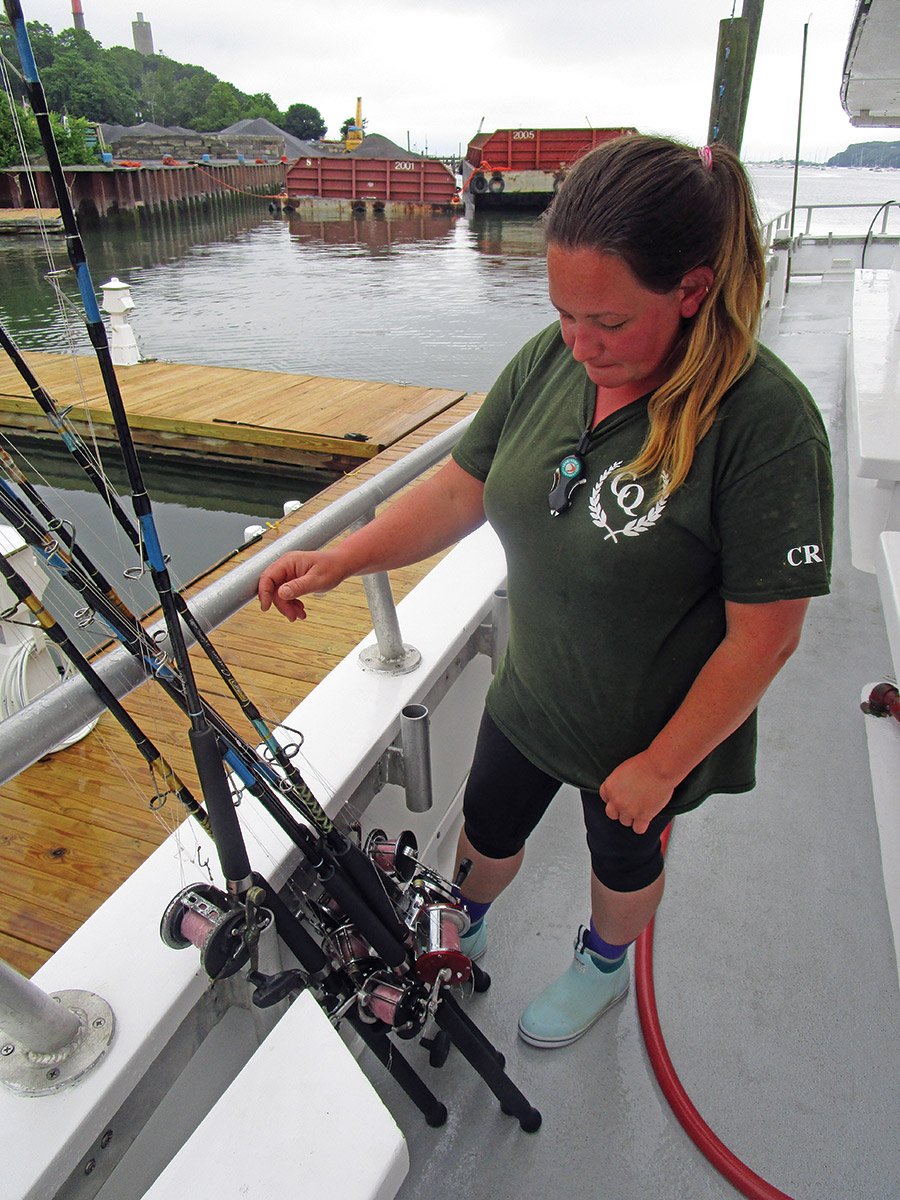
What Makes A Good Mate?
First, anticipating. By knowing what can go wrong before it happens and then doing everything they can to make sure it doesn’t. This means maintaining a mental sharpness throughout a long day, all without anyone aboard being the wiser. By practicing, rehearsing, and hopefully preparing for any possibility.
Second, acting in the knowledge they are part of a team. The captain may be running the boat, but sea, weather, or traffic conditions often demand his undivided attention. Here it becomes the mate’s job to keep him apprised of what’s happening down below.
Third, honestly loving what they do.
| THE ONES YOU SAIL WITH |
|---|
|
The following comments are from the men and women whose expertise contributed to this article. Note: All of the boats visited pride themselves on being dedicated to serving serious fisherman while still maintaining a reputation of being a family boat. On the Captain Gillen From the Celtic Quest Fleet Aboard the Shinnecock Star On the Super Hawk |




